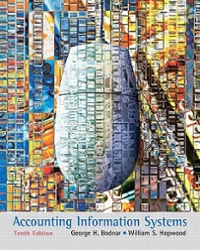Question
From Association of Certified Fraud Examiners Tractors - that's what brought McKinley down. The simple but vital machines were the main reason McKinley stole $150,000
From Association of Certified Fraud Examiners
Tractors - that's what brought McKinley down. The simple but vital machines were the main reason McKinley stole $150,000 from the bank where he worked as a chief financial officer.
McKinley's tale of woe actually had begun years earlier. He was an honor graduate from a prestigious Tennessee college with a degree in accounting. McKinley came from the right family, made a good marriage, attended the right church and went to work for the right bank. He earned his CPA. His future looked bright, but in McKinley's opinion, not bright enough. It seems that his lineage didn't come with a lot of money. So like many of us, McKinley decided to regularly invest a portion of his paycheck, hoping the investment would eventually bring him financial security.
Then McKinley did a very un-accountant-like thing. He put all his money in a local tractor dealership. On top of that, he borrowed all the money he could from his own employer and threw it on the pile. McKinley bragged to his co-workers about his new acquisition as evidence of his business acumen. But before long, McKinley's investment soured. He was then faced with a dilemma: The CFO would have to tell the bank president the truth - that even though he was in charge of the bank's money, he could not manage his own finances. The thought of admitting that, to acknowledge that he, the hotshot CFO, wasn't all that savvy, was unthinkable to McKinley. So he concocted a scheme.
McKINLEY'S BIG IDEA
First, McKinley had to raise nearly $10,000 to get his bank note out of default. Since he helped install the bank's system of internal control, he knew there was a simple way to override it. Specifically, as the bank's CFO, he was the ultimate authority on journal entries. He not only reviewed the entries of other employees, but also could make them himself. Other than the bank's regulators and external auditors, no one saw the numbers after McKinley.
To cover the money he needed, McKinley made a journal entry. The debit was to a bank correspondent account, a clearing account with lots of volume. That way, the entry was more likely to be lost in the shuffle. The credit was to McKinley's own personal checking account at the bank. Then he made a second entry, crediting the bank's correspondent account and debiting one of the bank's expense accounts: consulting, advertising or other "soft" expenses.
The trick worked. McKinley got the money to cover his past due bank payments, and no one was the wiser. It may have been that the technique was a little too easy, because the next time McKinley needed money, he reverted to the same method. In just over a year, he embezzled $150,000, using some of the money to cover his debts.
Please read the case study and answer each component of the following two essay questions.
- We learned in Chapter 2 that the fraud triangle identifies three critical elements that generally must exist in order for fraud to occur. They are:
- Motive
- Opportunity
- Rationalization
- Did the bank have a good system of internal controls? Should the external auditor have detected the fraud? Why or why not?
Step by Step Solution
There are 3 Steps involved in it
Step: 1

Get Instant Access to Expert-Tailored Solutions
See step-by-step solutions with expert insights and AI powered tools for academic success
Step: 2

Step: 3

Ace Your Homework with AI
Get the answers you need in no time with our AI-driven, step-by-step assistance
Get Started


